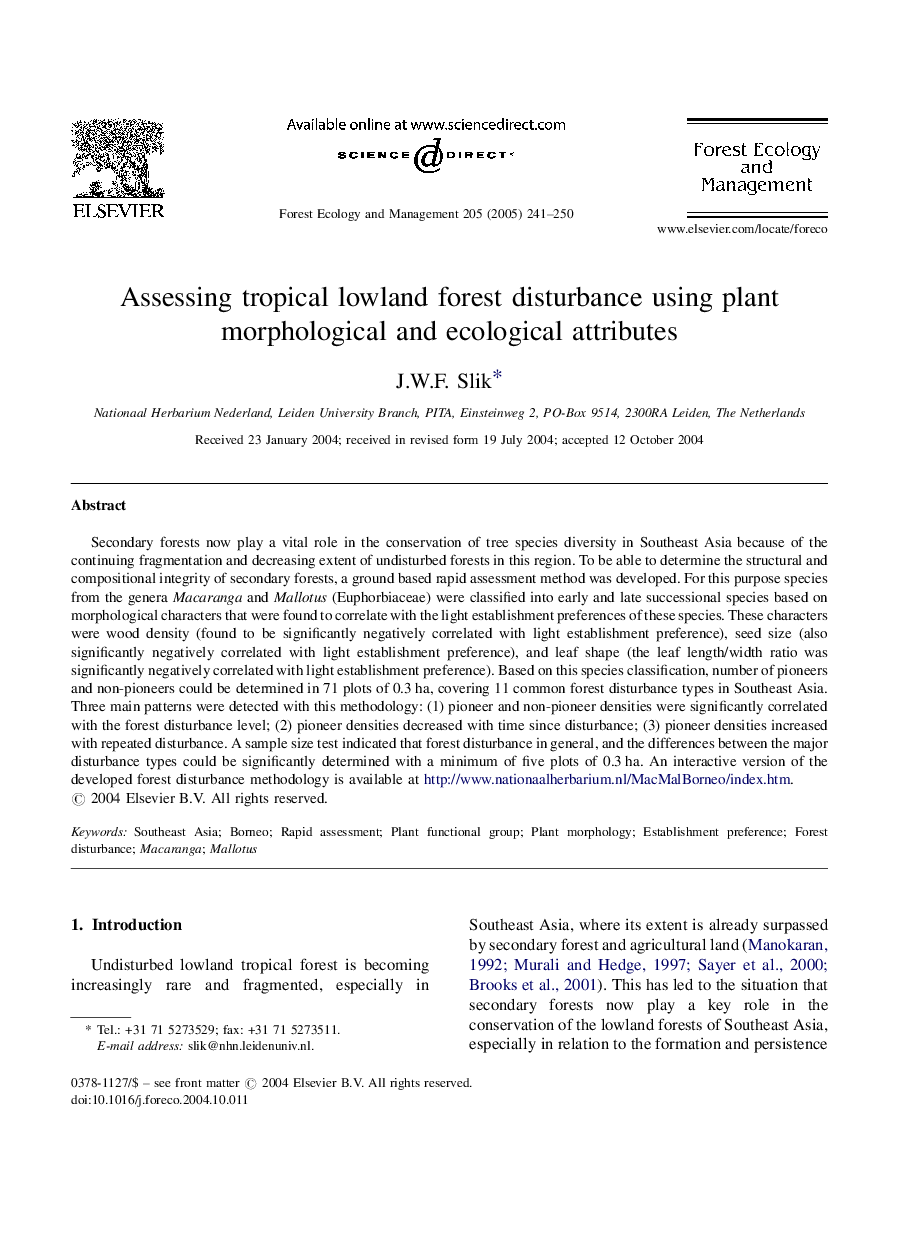| Article ID | Journal | Published Year | Pages | File Type |
|---|---|---|---|---|
| 9620508 | Forest Ecology and Management | 2005 | 10 Pages |
Abstract
Secondary forests now play a vital role in the conservation of tree species diversity in Southeast Asia because of the continuing fragmentation and decreasing extent of undisturbed forests in this region. To be able to determine the structural and compositional integrity of secondary forests, a ground based rapid assessment method was developed. For this purpose species from the genera Macaranga and Mallotus (Euphorbiaceae) were classified into early and late successional species based on morphological characters that were found to correlate with the light establishment preferences of these species. These characters were wood density (found to be significantly negatively correlated with light establishment preference), seed size (also significantly negatively correlated with light establishment preference), and leaf shape (the leaf length/width ratio was significantly negatively correlated with light establishment preference). Based on this species classification, number of pioneers and non-pioneers could be determined in 71 plots of 0.3Â ha, covering 11 common forest disturbance types in Southeast Asia. Three main patterns were detected with this methodology: (1) pioneer and non-pioneer densities were significantly correlated with the forest disturbance level; (2) pioneer densities decreased with time since disturbance; (3) pioneer densities increased with repeated disturbance. A sample size test indicated that forest disturbance in general, and the differences between the major disturbance types could be significantly determined with a minimum of five plots of 0.3Â ha. An interactive version of the developed forest disturbance methodology is available at http://www.nationaalherbarium.nl/MacMalBorneo/index.htm.
Keywords
Related Topics
Life Sciences
Agricultural and Biological Sciences
Ecology, Evolution, Behavior and Systematics
Authors
J.W.F. Slik,
